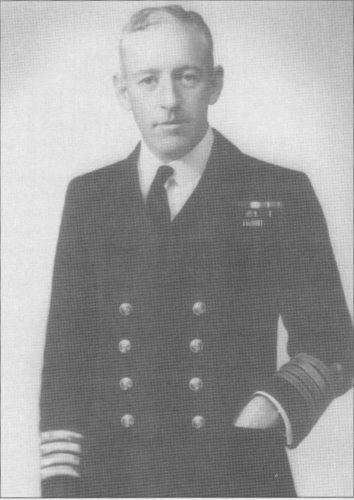- Author
- Howden, Patrick ffyske
- Subjects
- Biographies and personal histories
- Tags
-
- RAN Ships
- HMAS Canberra I, HMAS Parramatta I, HMAS Australia I, HMAS Cerberus (Shore Establishment), HMAS Tasmania, HMAS Yarra II, HMAS Huon I, HMAS Brisbane I, HMAS Hobart I, HMAS Protector I, HMAS Albatross, HMAS Anzac I, HMAS Adelaide I, HMAS Platypus
- Publication
- August 1999 edition of the Naval Historical Review (all rights reserved)
Material in this article is from a paper “Portrait of my Father” by Dr Patrick ffyske Howden and is used with Dr Howden’s kind permission.

Captain Harry L. Howden was a great character – “warts and all”. An unusual man of many parts. Such characters were not rare in the navy in the earlier decades of this century, but one has the impression that they no longer flourish in this age of political correctness. A great pity, as they so often showed outstanding leadership and ability, particularly in war.
Such a one was Harry Howden, affectionately nicknamed “Captain Harry” (sometimes “Den”) by his ship’s company in HMAS Hobart I, and still fondly remembered – almost venerated – by those remaining members now in the Hobart Association.
He joined that ship in late August 1939, and the day before the outbreak of hostilities – WW II – sailed from Sydney on what was to be a three-year absence. These were to be his “finest hours” and he and his ship built up an enviable reputation as a most efficient – and lucky – fighting unit.
Captain Harry was born in Wellington, NZ in 1896 and “had a strict though carefree upbringing, with six doting sisters”, holidaying in Furneaux Lodge on Queen Charlotte Sound. He grew to love the sea and was influenced in choosing the navy as a career by a Scottish uncle who was an Admiral in the Royal Navy, and whose sword is now a family heirloom. In WW I he served as a midshipman RNVR in the battleship Benbow and transferred to the young Australian Navy in 1917. His first Australian ship was HMAS Sydney 1 which, at that time, was experimenting with gun-turret launched Sopwith aircraft. This exciting innovation in naval warfare greatly influenced his future views on the use of ship borne aircraft at sea.
“Naval lifestyle bred in young Harry an uncompromising discipline, un-nerving curiosity and enthusiasm, inventiveness, a precision for detail, encyclopaedic knowledge, unorthodoxy, legendary skills, a total duty to King and country, plus total intolerance for incompetence, which often scared me as a kid.”
“He had a short temper, foul mouthed at times, but despite this, he was a thoughtful and kindly person, an interesting host with many friends and a flair for exotic food and liquor. He was a great fun lover and sportsman, always attracting affection, popularity and devotion.
However, to this high-living, religious Presbyterian, ostentatious even foppish philanthropist, the safety, welfare, performance and pleasure of all those under him was top priority. Beer would appear miraculously and morale-boosting relaxation would be granted during a break in some Red Sea operation, or after covering an exhausting amphibious landing. He was not averse to deliberately disobeying orders when he thought it necessary. ”
Harry served in many RAN ships:- Protector, Platypus, Brisbane I, Parramatta 1, Huon, Anzac 1, Tasmania, Australia, Albatross, Canberra I, Yarra II and Adelaide I. He commanded Cerberus (FND) on two occasions.
On one period of loan service with the RN, he was given command of HMS Mantis, a gunboat of the Insect Class, on the Yangtze Kiang in China. In her he led an exciting life and was awarded the OBE when he disguised an armed boat as a sampan and rescued two missionaries and a Roman Catholic Bishop from bandits. He was married to an English girl during this time. Some years later (1937-38) he served in the Naval Intelligence Division in the Admiralty and while in that, appointment became convinced of the inevitability of WWII.
He returned to Australia to command HMAS Yarra for a short period before commissioning HMAS Adelaide in March 1939 after her major refit in which she was converted from coal to oil fuel.
He joined Hobart at the conclusion of Adelaide’s short working up commission and his first war-time tasks were escorting troop convoys to the Middle East.
In April 1940, in anticipation of war with Italy, a Red Sea Force was formed, based on Aden, with Hobart as its first large component.
The ship distinguished itself in assisting the allied troops in Somaliland and, later, Hobart commanded the operation of the withdrawal of those troops from Berbera – 38,000 men!




